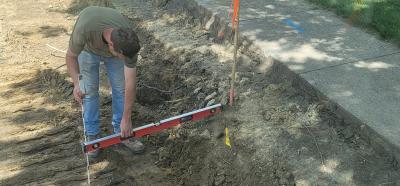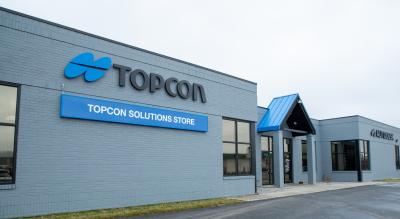Pretty much every business has the same general idea nowadays — become more efficient, and, in turn, become more profitable. The daunting effort or expense sometimes required to improve efficiency can make such a goal easier to conceive than accomplish. But in many cases, a company may be in dire need of an overhaul, no matter what the obstacles.
Count Chicago Tube and Iron Company (CT&I) is among those that realized operational changes were in order. Founded in 1914, CT&I consists of several locations throughout the Midwest and employs more than 400. Although the company has been extremely successful, with annual revenues in the neighborhood of $200 million, the configuration of its primary factory and corporate headquarters in Chicago — comprising a dozen buildings spread across several city blocks — was less than ideal.
As so many businesses do in such cases, CT&I decided to relocate and made plans to construct a 360,000-sq.-ft. (33,440 sq m) facility in Romeoville, Ill., that would bring all Chicago operations into one building. The new complex was up and running in late 2005, and by early 2006 all employees and operations had transferred to the new location.
The original CT&I facilities escaped annihilation for a brief period of time while ownership of the land twice changed hands, but the reprieve was short-lived. The inevitable end for the 90-year-old structures became reality when a $1.3 million demolition contract was awarded to Chicago contractor N. F. Demolition Inc., whose crews hit the site in April 2007.
N. F. Demolition was founded in 1988 by president Nick Fratantion, who previously worked as a heavy equipment operator and engineer for various construction and demolition contracting firms. Today, the company has 36 employees, eight of whom headed to work on the first stage of the CT&I site.
“This is a two-phase project,” said Fratantion. “Two of the buildings are across the street, away from the remaining structures. Our initial assignment was to take down those two buildings in about five weeks so some model homes could go into that area as soon as possible.”
The rest of the buildings were scheduled to come down later in 2007, once property re-zoning issues were officially resolved by the city. Long-term plans call for the construction of a school, housing and other residential developments.
Although the structures on site had been around for a while, taking them down wasn’t going to be completely free of challenges. With some of the buildings existing for CT&I’s entire nine-decade history, a few unique designs had been employed at various times to recondition the aging buildings without affecting the flow of day-to-day manufacturing operations.
“One building had a wooden buttress roof,” said Fratantion. “Somebody must have recognized that it needed replacing at some point. So they actually built a second roof using some massive, steel beams that span about 150 feet. But the old roof wasn’t removed. The new roof was built right over the top, probably so they wouldn’t have to shut down production for a more thorough renovation.”
Aside from the occasional wooden roof discovery, N.F. Demolition found that the buildings were constructed primarily of brick and steel. Among the equipment the company had on site to demolish the structures were cranes, wheel loaders with biter buckets, and excavators with cutting shears and grapple attachments. The assortment of equipment proved effective for many tasks, but like most demolition jobs, this one also had some concrete with which to contend.
“A couple of the buildings are about five or six stories high, and they’re supported with reinforced concrete columns that are three or four feet in diameter,” said Fratantion. “We have concrete processors, but they aren’t able to bite around a column that size. So instead we use our hydraulic breaker to hammer those apart.”
The breaker being used on the CT&I job is an HB 3000 hydraulic breaker from Atlas Copco Construction Tools, an attachment N.F. Demolition purchased from local dealer Steve’s Equipment Service in 2006. The 6,610-lb. (3,000 kg) unit, currently mounted on a Cat 345 excavator, delivers more than 4,500 ft.-lbs. (6,102 Nm) of impact energy.
“When the breaker is lined up and ready to go, it can take down one of those columns in about five minutes,” said Fratantion. “Then we can come back in and use the processor to separate the rebar from the concrete.”
N. F. Demolition also is using the HB 3000 to break up concrete footings, foundations, slabs and floors on the project.
“Most of the floors are about a foot thick,” said Fratantion. “The footings we’ve busted up were 15 to 18 inches thick and four feet wide. We also used the HB 3000 in the old steel mill here to break up some concrete pads and foundations that were about 4 feet wide, and it just ate them up. We have two other hammers in our fleet, and the Atlas Copco breaker really puts them to shame.”
Fratantion estimated that the HB 3000 is breaking 300 to 350 tons (272 to 317 t) of concrete per day at the site, productivity that he attributes not only to the breaker’s power, but also to its reliability.
“It’s been one year since we purchased the unit, and we’ve had zero problems with it,” said Fratantion. “That’s why we’re in the process of buying another Atlas Copco breaker to help out with the rest of the project.”
As with all medium and heavy breakers in the Atlas Copco line, the HB 3000’s performance is aided by AutoControl, a standard feature that automatically adjusts the breaker’s output energy to match the working conditions. In lighter material, the breaker hits faster with reduced power. When more difficult material is encountered, the breaker delivers maximum energy at a lower impact rate. These adjustments help the HB 3000 to constantly work at peak efficiency, while avoiding unnecessary strain and potential equipment damage.
Another key to the breaker’s self-preservation is ContiLube II, the HB 3000’s standard automatic lubrication system.
“That’s one of the best features anybody ever came out with,” said Fratantion. “Without the automatic lubrication, you have to count on your operator to get out of the cab and manually grease the breaker. So you’re spending time on maintenance instead of getting something done. As an owner, it’s a huge relief for me to know that my equipment is being taken care of, and if the equipment can take care of it automatically without costing me downtime, that’s even better.”
Demolition projects are usually accompanied by a fair amount of noise pollution, which can be particularly concerning in a residential neighborhood like the one across the street from the CT&I factory. However, Atlas Copco HB 3000’s VibroSilenced system uses an elastic damping element to contain the sound of the breaker’s percussion mechanism.
“With all the machines running on a job site, noise is a given,” said Fratantion. “Obviously the sound of the breaker’s tool hitting the concrete is there, but the breaker itself is incredibly quiet. Taking some of that noise out of the equation is very beneficial to our operators, and it’s probably nice for the nearby residents as well.”
The face of this Chicago neighborhood will certainly have changed by the time N. F. Demolition has demolished every last building and processed all the concrete at the 500,000-sq.-ft. (46,400 sq m) site. And the area’s look will continue to evolve after the demolition of CT&I, as new residential construction gradually fills the void.
For CT&I, its change to a new, modern facility should deliver the desired result — a more efficient and more profitable operation. The same could be said of N.F. Demolition’s decision to purchase an Atlas Copco breaker, a selection that’s proven extremely effective as it continues to tear apart the 37,000 tons (33,500 t) of concrete on the CT&I project.
Today's top stories















